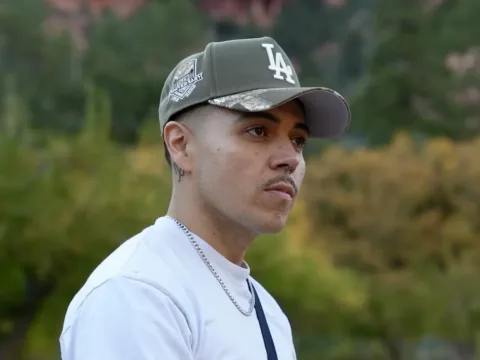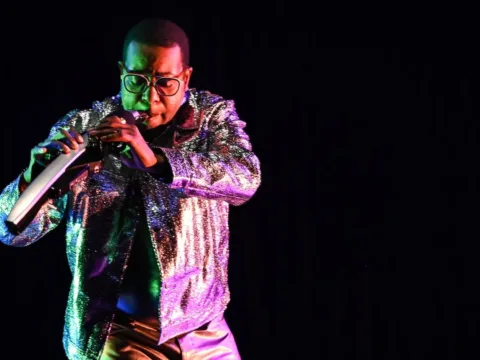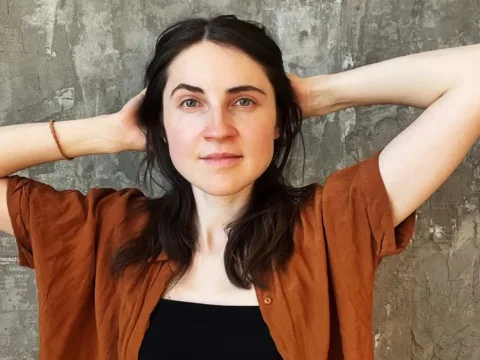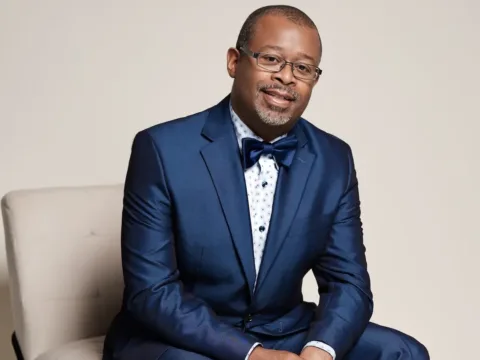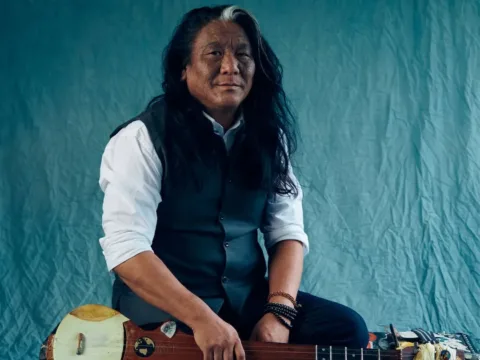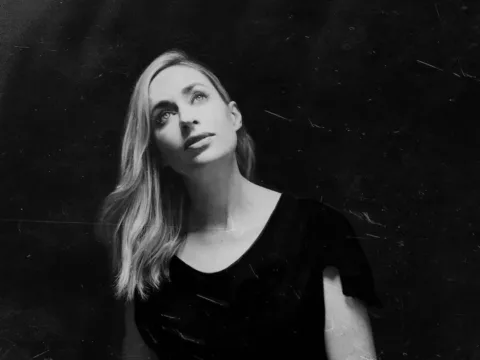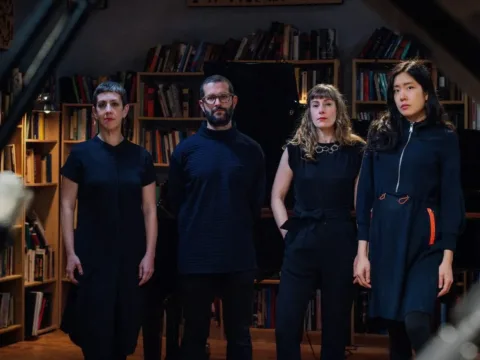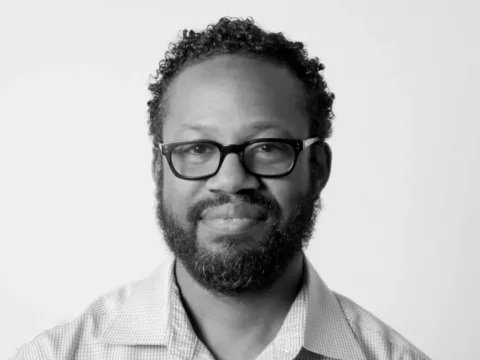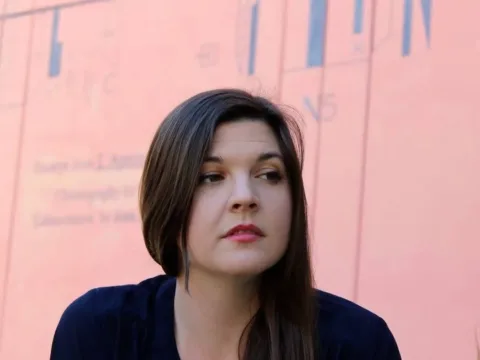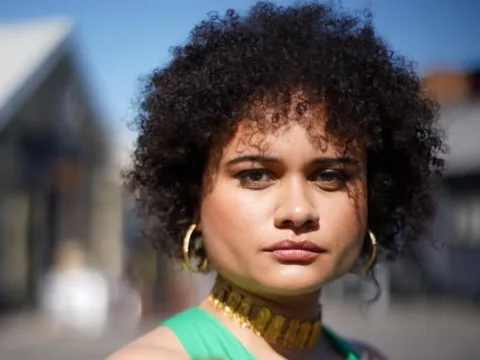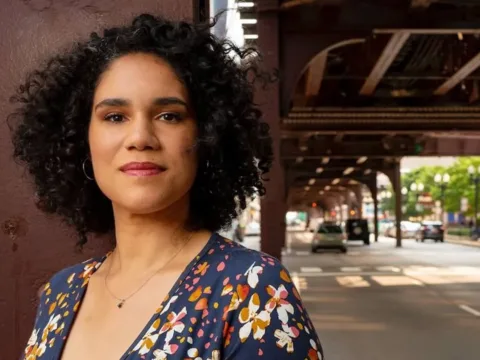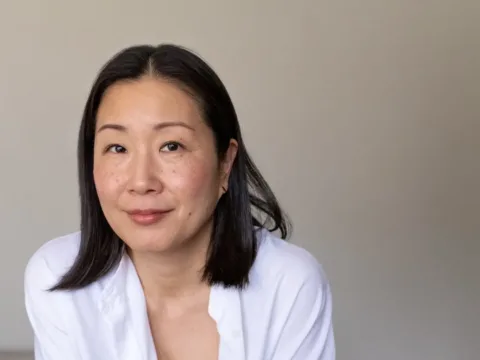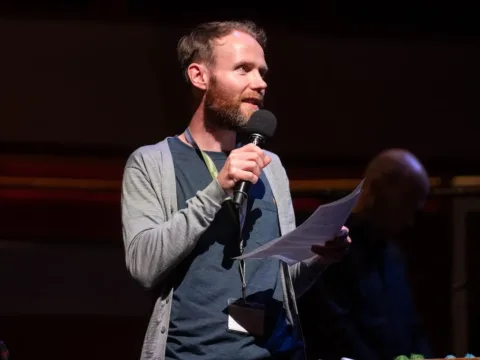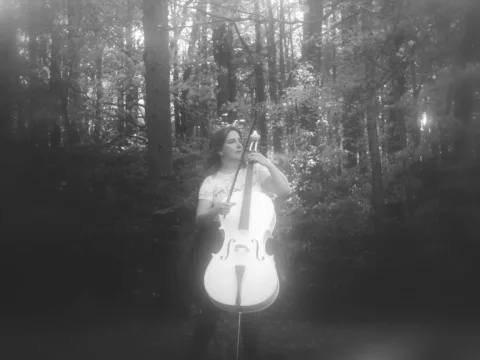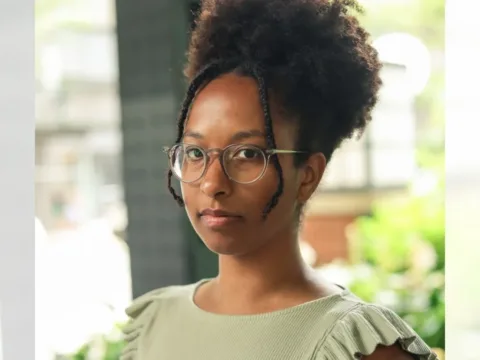The sound of the trumpet has long indicated we’re on the precipice of something – announcements of a future that looms close, of someone just beyond the horizon. An enemy, an ally. On Storyteller: Contemporary Concertos for Trumpet, soloist Mary Elizabeth Bowden advocates for a future of trumpet repertoire that includes collaboration across disciplines, mediums, and ages. Released June 14 on Cedille Records, the album features Bowden with the Chicago Youth Symphony Orchestra (CYSO) and conductor Allen Tinkham in support – they present world premiere recordings of pieces by James M. Stephenson, Clarice Assad, Vivian Fung, Tyson Gholston Davis, Sarah Kirkland Snider, and Reena Esmail.
Two of the pieces reflect Bowden’s own life and experience as a woman in a male-dominated field; in fact, each piece on the album draws inspiration from an artist and storyteller in their own right, weaving vulnerability and variety throughout the project. Bowden’s collaborations and aims here bolster her larger artistic ethos and investments in highlighting artists from historically marginalized/underrepresented groups and expanding trumpet repertoire, which she pursues across other projects such as Seraph Bass and the Chrysalis Chamber Players.
Stephenson’s The Storyteller opens the album with Barber-esque, meandering gestures, which Bowden realizes with a serene and emotive tone as the trumpet emerges from the orchestral mist. Bohemian Queen (Assad) and Veiled Light (David) respond to paintings with respective jazz and impressionistic touches, accentuating the singing capabilities of the instrument and expressing both light and jagged shadow. And in her new arrangement of Caritas, originally written for mezzo soprano, Snider rocks us on a bed of strings, and Bowden leans into the songlike form of the piece with the lower mid-range of her instrument.
We chatted with Bowden about this record, her approach to collaboration, and her hopes for the concerto form.
I love the title Storyteller for this album – it’s quite evocative. Could you tell us about a story or storyteller in your life that has had a meaningful influence on you?
The title Storyteller comes from the name of one of the pieces composed by James Stephenson. It was written in memory of Adolph Herseth, who was Principal Trumpet of the Chicago Symphony for over 50 years. The title came from an article Stephenson read about Herseth, that he told a story with every note that he played.
I grew up in the Chicagoland area, and my first teacher, Tim Jones, is the reason why my family and I fell in love with classical music. My two older brothers play the horn and trombone, and Tim taught all three of us on Saturdays. He would pick us up and drive us to hear the Chicago Symphony Orchestra and many concerts around the area. We were exposed to countless concerts in our formative years. Nothing replaces this experience of hearing music live. I remember sound colors vividly, and have many musical memories from this time including hearing my favorite trumpet soloist Sergei Nakariakov perform.
What was the motivation behind an album of concerti? What draws you to that instrumentation/tradition, as opposed to your work as a chamber musician?
It has been a dream of mine to record a solo album with a symphony orchestra. The motivation behind recording an album of concerti stemmed from my deep passion for showcasing the trumpet’s expressive capabilities through my voice as a soloist. I wanted to share newly composed works to expand the repertoire for the trumpet.
I personally see all music with others as chamber music. The roles are different depending on the composition, section of the piece, and mood. When I perform as a soloist with an orchestra, I like to stand where I can see the first violins and conductor so there are visuals for me to play with them, rather than viewing myself as a separate entity.
I enjoy being a chameleon in my career with the primary focus on my solo career, performing concerts as a soloist with orchestras or with a pianist. I enjoy making new collaborations and projects, my most recent being a program with string quartet, touring with the Chrysalis Chamber Players. I am passionate about chamber music, and I am the leader and founder of Seraph Brass, a brass quintet composed of the US’s top women brass performers.

There’s a beautiful respect in collaboration that runs through the duets/chamber moments in this record. How would you describe the process of working with fellow soloists and a youth orchestra/young players to present these new additions to the trumpet repertoire?
As an educator, I enjoy working with the next generation of musicians. The musicians of the Chicago Youth Symphony Orchestra are at a very high level, and they have a lot of curiosity and enthusiasm. Prior to recording Vivian Fung and Clarice Assad’s works, we rehearsed and performed the pieces in Orchestra Hall in Chicago. We were able to try new ideas and workshop the pieces which made the recording process smoother.
I enjoyed reconnecting with a classmate and friend of mine from the Curtis Institute of Music, Yvonne Lam, on Storyteller. She has a gorgeous tone and it was easy to match sounds and phrasing.
Bohemian Queen and Veiled Light invoke and interpret works by Gertrude Abercrombie and James Abbott McNeill Whistler, respectively. For you, what makes a visual artwork conducive to sonic representation?
The first two movements of Bohemian Queen are based off two different paintings. The first movement, Girl Searching, is a self-portrait of the artist walking in the evening with a full moon. The painting is murky with the brightest color being the turquoise house. Abercrombie often did not feel comfortable in her own skin, searching for herself. The piece starts off with the dark color of the flugelhorn and the lines are murmurs, sounding improvised. The second movement, The Stroll, shows Abercrombie walking again at night, this time with a black cat. When I perform this work, I draw on my own personal stories. I have a beloved cat named Duke, and some of my favorite memories are walking him at night in the moonlight. I feel very relaxed and content when I perform The Stroll.
In Veiled Light, Whistler’s painting Nocturne in Black and Red is the inspiration. The two lines of the antiphonal trumpets are often trading seamlessly back and forth, and emerging subtly out of the sounds of the strings. Davis was intrigued how the reflection of the canal buildings is cast into the canal as if the water is not moving and reflected this into the writing. Having the paintings as visual inspiration is helpful for creating the mood for the pieces. I often think of different sound colors for the trumpet, and much of this can change for me by imagining different timbres and instruments.
How did working on this project expand your ideas of what a concerto is? What are your hopes and dreams for the concerto form?
I found it very interesting to see how the tapestry of pieces came together for this album. Each composer has a distinct voice and musical story. I do not have a set idea of what a concerto should or shouldn’t be. My intention is to continue to work with more composers, continuously expanding the trumpet repertoire. I choose composers whose music I feel drawn to, and that has always been what drives me. The next concerto will be written by Jeff Scott to be premiered in the 2025-2026 season.
I CARE IF YOU LISTEN is an editorially-independent program of the American Composers Forum, and is made possible thanks to generous donor and institutional support. Opinions expressed are solely those of the author and may not represent the views of ICIYL or ACF.
You can support the work of ICIYL with a tax-deductible gift to ACF. For more on ACF, visit the “At ACF” section or composersforum.org.

